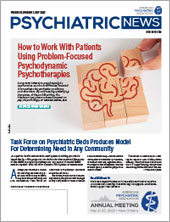Relapse. Cravings. Staying clean. Such words are commonly used to describe the challenges associated with abstaining from drugs or alcohol. But on online message boards such as Reddit, these terms are frequently used by individuals struggling with a different behavior—a desire to self-injure.
Earlier this year, a team led by Brenda Curtis, Ph.D., chief of the Technology and Translational Research Unit at the National Institute on Drug Abuse, conducted a quantitative analysis of online posts made by 500 people who discussed their experiences with nonsuicidal self-injury (NSSI). They assessed how many of these individuals used phrases indicative of one of the 11 DSM-5 criteria for substance use disorders (SUD), which the researchers had adapted to NSSI; for example, did the online commenters discuss multiple unsuccessful efforts to quit self-harming or that their self-injury impacted their work or social life?
Curtis’ team found that over 75% of the individuals endorsed at least two DSM-5 criteria, which would equate to mild SUD, while over 30% of the individuals met the criteria for moderate (4-5 criteria) or severe (6+ criteria) SUD.
The most common criteria described were having irresistible urges/cravings and the need to increase self-harm severity to achieve the same effect.
Stephen Lewis, Ph.D., a professor of psychology at the University of Guelph in Ontario, Canada, noted that while self-injury is distinct from addiction, there can be some similarities. “The primary reason why people self-injure is to obtain relief from intense emotional experiences like distress or sadness,” he told Psychiatric News. Alcohol and drugs can serve a similar function, but these substances are also frequently used (and misused) by people experiencing positive feelings.
Over time, with addiction to a substance, the substance “becomes reinforcing no matter what else is going on in an individual’s life,” said E. David Klonsky, Ph.D., a professor of psychology at the University of British Columbia and a leading researcher on suicide and self-harm. “Most people with [nonsuicidal self-injury], however, do not feel the urge to hurt themselves if they’re having a good day.”
Klonsky published a study that explored this back in 2012. He and colleagues administered craving questionnaires to 58 adolescents who were receiving psychiatric treatment for self-injury and/or substance use. They found that average craving scores were much lower for self-injury than for any substance, and that self-injury but not substance use was craved solely in negative contexts. These discrepancies held true even among the youth who had problems with both self-injury and substance use.
Do people who engage in nonsuicidal self-injury share more similarities with people with other psychiatric disorders? In years past, this behavior was linked with borderline personality disorder, Klonsky noted, but in 2013 nonsuicidal self-injury was introduced as a separate condition worth further study in DSM-5. Given the connection between self-injury and negative emotions, some people have suggested nonsuicidal self-injury might be a depressive disorder. Klonsky, however, believes it fits better as part of a category of behavioral disorders, such as binge eating or hair pulling, in which individuals continually turn to a specific behavior to relieve stress or gain gratification.
Why then do people who self-injure commonly use such terms as “clean” and “relapse” to describe their experiences?
“The conversation around substance use, particularly around recovery, is becoming mainstream,” Curtis said. As such, people may feel more comfortable describing their symptoms in these terms. “Anything you can do to help destigmatize a disorder is valuable since people will open up more and go see health care professionals.”
Lewis, who has publicly shared his own struggles with nonsuicidal self-injury, added that individuals may use similar language as is used to describe addiction to relay the seriousness of their behaviors. “These youth are telling us that this is not attention seeking or a fad they will outgrow; it is not a behavior people can simply stop cold turkey,” he said.
Clinicians and therapists who work with people who engage in nonsuicidal self-injury can use this information to their advantage, Lewis added. “I’m not saying we apply an SUD framework when helping individuals who self-injure, but if they are describing their self-injury as an addiction, we should use similar language to validate their experience,” he said. “Remember, people who have self-injured are the experts in their own experience, and we need to work with them to promote resilience and eventually recovery.”
Curtis’ study was funded by the National Institute on Drug Abuse Intramural Research Program. ■

